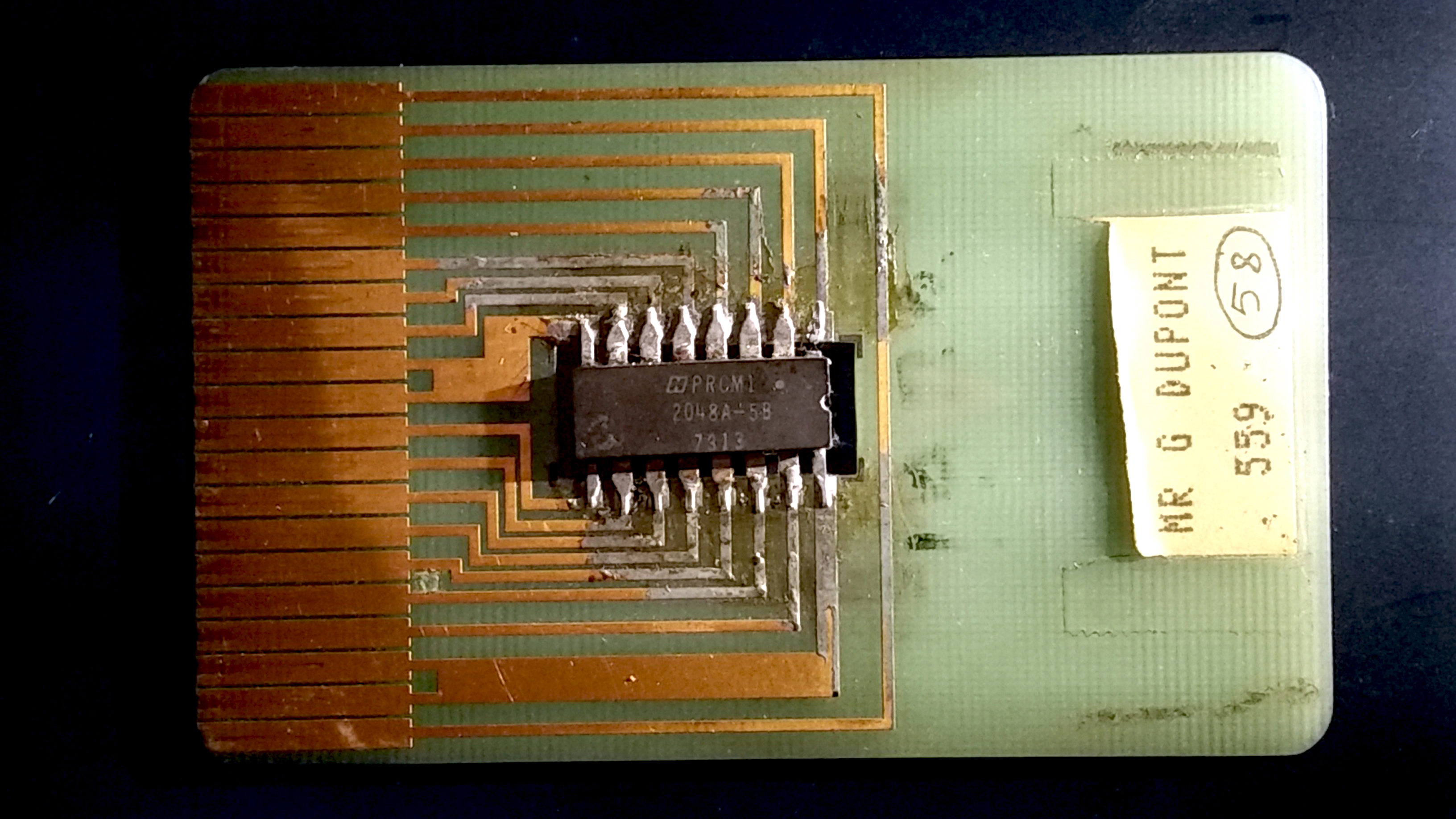|
Cryptoprocessor
A secure cryptoprocessor is a dedicated computer-on-a-chip or microprocessor for carrying out cryptographic operations, embedded in a packaging with multiple physical security measures, which give it a degree of tamper resistance. Unlike cryptographic processors that output decrypted data onto a bus in a secure environment, a secure cryptoprocessor does not output decrypted data or decrypted program instructions in an environment where security cannot always be maintained. The purpose of a secure cryptoprocessor is to act as the keystone of a security subsystem, eliminating the need to protect the rest of the subsystem with physical security measures. Examples A hardware security module (HSM) contains one or more secure cryptoprocessor chips. These devices are high grade secure cryptoprocessors used with enterprise servers. A hardware security module can have multiple levels of physical security with a single-chip cryptoprocessor as its most secure component. The cryptoproc ... [...More Info...] [...Related Items...] OR: [Wikipedia] [Google] [Baidu] [Amazon] |
Smartcard
A smart card (SC), chip card, or integrated circuit card (ICC or IC card), is a card used to control access to a resource. It is typically a plastic credit card-sized card with an embedded integrated circuit (IC) chip. Many smart cards include a pattern of metal contacts to electrically connect to the internal chip. Others are contactless, and some are both. Smart cards can provide personal identification, authentication, data storage, and application processing. Applications include identification, financial, public transit, computer security, schools, and healthcare. Smart cards may provide strong security authentication for single sign-on (SSO) within organizations. Numerous nations have deployed smart cards throughout their populations. The universal integrated circuit card (UICC) for mobile phones, installed as pluggable SIM card or embedded eSIM, is also a type of smart card. , 10.5billion smart card IC chips are manufactured annually, including 5.44billion SIM card IC ... [...More Info...] [...Related Items...] OR: [Wikipedia] [Google] [Baidu] [Amazon] |
Bus Encryption
Bus encryption is the use of encrypted program instructions on a data bus in a computer that includes a secure cryptoprocessor for executing the encrypted instructions. Bus encryption is used primarily in electronic systems that require high security, such as automated teller machines, TV set-top boxes, and secure data communication devices such as two-way digital radios. Bus encryption can also mean encrypted data transmission on a data bus from one processor to another processor. For example, from the CPU to a GPU which does not require input of encrypted instructions. Such bus encryption is used by Windows Vista and newer Microsoft operating systems to protect certificates, BIOS, passwords, and program authenticity. PVP-UAB ( Protected Video Path) provides bus encryption of premium video content in PCs as it passes over the PCIe bus to graphics cards [...More Info...] [...Related Items...] OR: [Wikipedia] [Google] [Baidu] [Amazon] |
Trusted Platform Module
A Trusted Platform Module (TPM) is a secure cryptoprocessor that implements the ISO/IEC 11889 standard. Common uses are verifying that the boot process starts from a trusted combination of hardware and software and storing disk encryption keys. A TPM 2.0 implementation is part of the Windows 11 system requirements. History The first TPM version that was deployed was 1.1b in 2003. Trusted Platform Module (TPM) was conceived by a computer industry consortium called Trusted Computing Group (TCG). It evolved into ''TPM Main Specification Version 1.2'' which was standardized by International Organization for Standardization (ISO) and International Electrotechnical Commission (IEC) in 2009 as ISO/IEC 11889:2009. ''TPM Main Specification Version 1.2'' was finalized on 3 March 2011 completing its revision. On April 9, 2014, the Trusted Computing Group announced a major upgrade to their specification entitled ''TPM Library Specification 2.0''. The group continues work on the standard ... [...More Info...] [...Related Items...] OR: [Wikipedia] [Google] [Baidu] [Amazon] |
Hardware Security Module
A hardware security module (HSM) is a physical computing device that safeguards and manages secrets (most importantly digital keys), and performs encryption and decryption functions for digital signatures, strong authentication and other cryptographic functions. These modules traditionally come in the form of a plug-in card or an external device that attaches directly to a computer or network server. A hardware security module contains one or more secure cryptoprocessor chips. Design HSMs may have features that provide tamper evidence such as visible signs of tampering or logging and alerting, or tamper resistance which makes tampering difficult without making the HSM inoperable, or tamper responsiveness such as deleting keys upon tamper detection. Each module contains one or more secure cryptoprocessor chips to prevent tampering and bus probing, or a combination of chips in a module that is protected by the tamper evident, tamper resistant, or tamper responsive packaging. A ... [...More Info...] [...Related Items...] OR: [Wikipedia] [Google] [Baidu] [Amazon] |
IBM 4758
The IBM 4758 PCI Cryptographic Coprocessor is a secure cryptoprocessor implemented on a high-security, tamper resistant, programmable PCI expansion card. Specialized cryptographic electronics, microprocessor, memory, and random number generator housed within a tamper-responding environment provide a highly secure subsystem in which data processing and cryptography can be performed. IBM International Business Machines Corporation (using the trademark IBM), nicknamed Big Blue, is an American Multinational corporation, multinational technology company headquartered in Armonk, New York, and present in over 175 countries. It is ... supplies two cryptographic-system implementations, and toolkits for custom application development: * The PKCS#11, version 2.01 implementation creates a high-security solution for application programs developed for this industry-standard API. * The IBM Common Cryptographic Architecture implementation provides many functions of special interest in ... [...More Info...] [...Related Items...] OR: [Wikipedia] [Google] [Baidu] [Amazon] |
Automated Teller Machine
An automated teller machine (ATM) is an electronic telecommunications device that enables customers of financial institutions to perform financial transactions, such as cash withdrawals, deposits, funds transfers, balance inquiries or account information inquiries, at any time and without the need for direct interaction with bank staff. ATMs are known by a variety of other names, including automatic teller machines (ATMs) in the United States (sometimes RAS syndrome, redundantly as "ATM machine"). In Canada, the term automated banking machine (ABM) is also used, although ATM is also very commonly used in Canada, with many Canadian organizations using ATM rather than ABM. In British English, the terms cashpoint, cash machine and hole in the wall are also used. ATMs that are Independent ATM deployer, not operated by a financial institution are known as "White-label ABMs, white-label" ATMs. Using an ATM, customers can access their bank deposit or credit accounts in order to make ... [...More Info...] [...Related Items...] OR: [Wikipedia] [Google] [Baidu] [Amazon] |
Authentication
Authentication (from ''authentikos'', "real, genuine", from αὐθέντης ''authentes'', "author") is the act of proving an Logical assertion, assertion, such as the Digital identity, identity of a computer system user. In contrast with identification, the act of indicating a person or thing's identity, authentication is the process of verifying that identity. Authentication is relevant to multiple fields. In art, antiques, and anthropology, a common problem is verifying that a given artifact was produced by a certain person, or in a certain place (i.e. to assert that it is not counterfeit), or in a given period of history (e.g. by determining the age via carbon dating). In computer science, verifying a user's identity is often required to allow access to confidential data or systems. It might involve validating personal identity documents. In art, antiques and anthropology Authentication can be considered to be of three types: The ''first'' type of authentication is accep ... [...More Info...] [...Related Items...] OR: [Wikipedia] [Google] [Baidu] [Amazon] |
Tamper Resistance
Tamperproofing is a methodology used to hinder, deter or detect unauthorised access to a device or circumvention of a security system. Since any device or system can be foiled by a person with sufficient knowledge, equipment, and time, the term "tamperproof" is a misnomer unless some limitations on the tampering party's resources is explicit or assumed. Tamper resistance is resistance to intentional malfunction or sabotage by either the normal users of a product, package, or system or others with physical access to it. Tamper resistance ranges from simple features like screws with special drives and tamper-evident seals to more complex devices that render themselves inoperable or encrypt all data transmissions between individual chips, use of materials needing special tools and knowledge. Tamper-resistant devices or features are common on packages to deter package or product tampering or enable its detection. Anti-tamper devices have one or more components: tamper resistance, ... [...More Info...] [...Related Items...] OR: [Wikipedia] [Google] [Baidu] [Amazon] |
Full Disk Encryption
Disk encryption is a technology which protects information by converting it into code that cannot be deciphered easily by unauthorized people or processes. Disk encryption uses disk encryption software or hardware to encrypt every bit of data that goes on a disk or disk volume. It is used to prevent unauthorized access to data storage. The expression ''full disk encryption (FDE)'' (or ''whole disk encryption'') signifies that everything on the disk is encrypted, but the master boot record (MBR), or similar area of a bootable disk, with code that starts the operating system loading sequence, is not encrypted. Some hardware-based full disk encryption systems can truly encrypt an entire boot disk, including the MBR. Transparent encryption Transparent encryption, also known as real-time encryption and on-the-fly encryption (OTFE), is a method used by some disk encryption software. "Transparent" refers to the fact that data is automatically encrypted or decrypted as it is loaded o ... [...More Info...] [...Related Items...] OR: [Wikipedia] [Google] [Baidu] [Amazon] |
Cryptographic
Cryptography, or cryptology (from "hidden, secret"; and ''graphein'', "to write", or '' -logia'', "study", respectively), is the practice and study of techniques for secure communication in the presence of adversarial behavior. More generally, cryptography is about constructing and analyzing protocols that prevent third parties or the public from reading private messages. Modern cryptography exists at the intersection of the disciplines of mathematics, computer science, information security, electrical engineering, digital signal processing, physics, and others. Core concepts related to information security ( data confidentiality, data integrity, authentication, and non-repudiation) are also central to cryptography. Practical applications of cryptography include electronic commerce, chip-based payment cards, digital currencies, computer passwords, and military communications. Cryptography prior to the modern age was effectively synonymous with encryption, convert ... [...More Info...] [...Related Items...] OR: [Wikipedia] [Google] [Baidu] [Amazon] |
Codebreaking
Cryptanalysis (from the Greek ''kryptós'', "hidden", and ''analýein'', "to analyze") refers to the process of analyzing information systems in order to understand hidden aspects of the systems. Cryptanalysis is used to breach cryptographic security systems and gain access to the contents of encrypted messages, even if the cryptographic key is unknown. In addition to mathematical analysis of cryptographic algorithms, cryptanalysis includes the study of side-channel attacks that do not target weaknesses in the cryptographic algorithms themselves, but instead exploit weaknesses in their implementation. Even though the goal has been the same, the methods and techniques of cryptanalysis have changed drastically through the history of cryptography, adapting to increasing cryptographic complexity, ranging from the pen-and-paper methods of the past, through machines like the British Bombes and Colossus computers at Bletchley Park in World War II, to the mathematically advanced comput ... [...More Info...] [...Related Items...] OR: [Wikipedia] [Google] [Baidu] [Amazon] |






